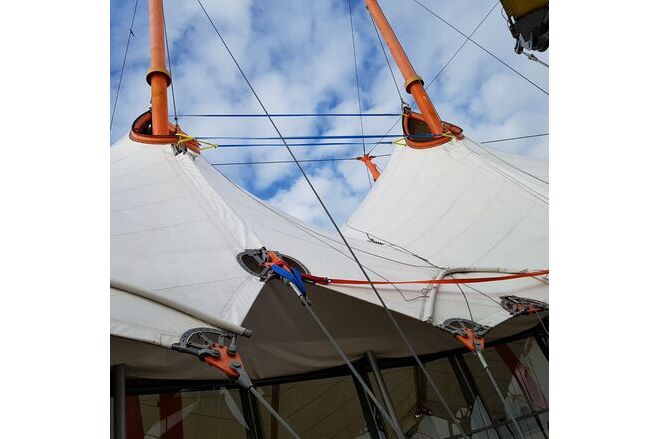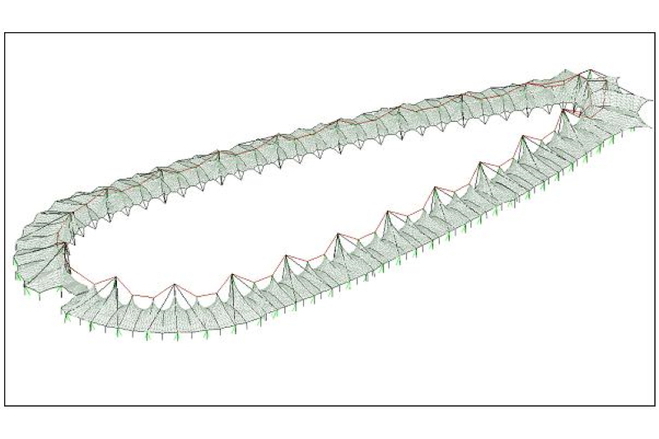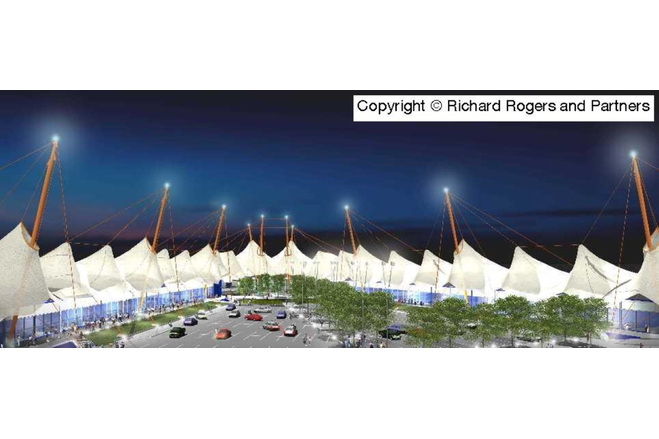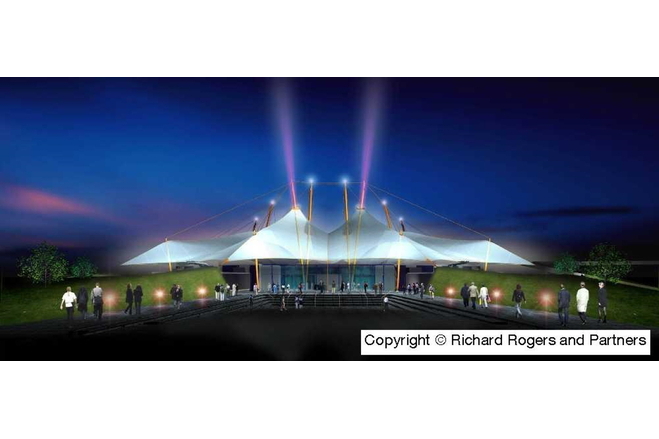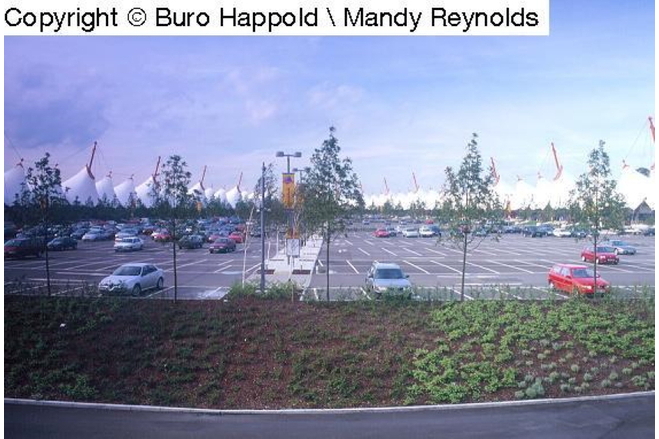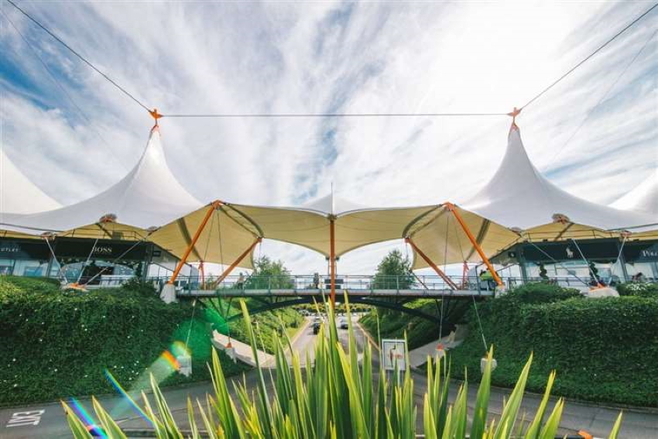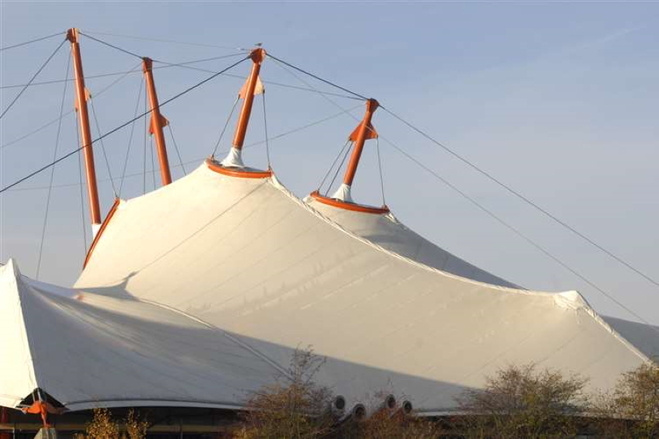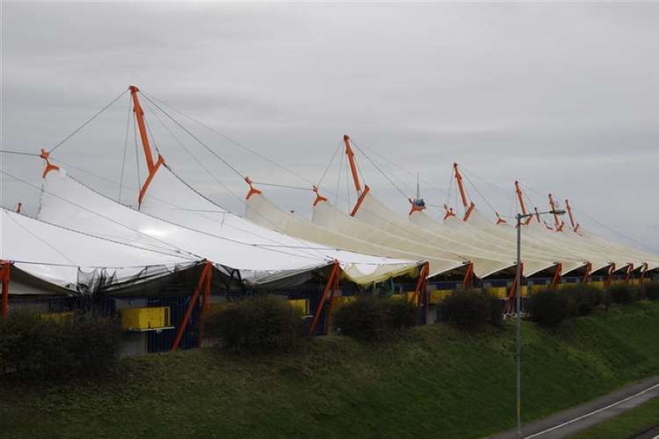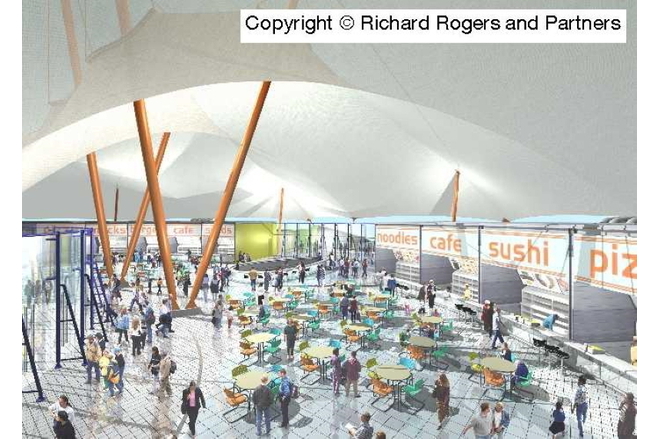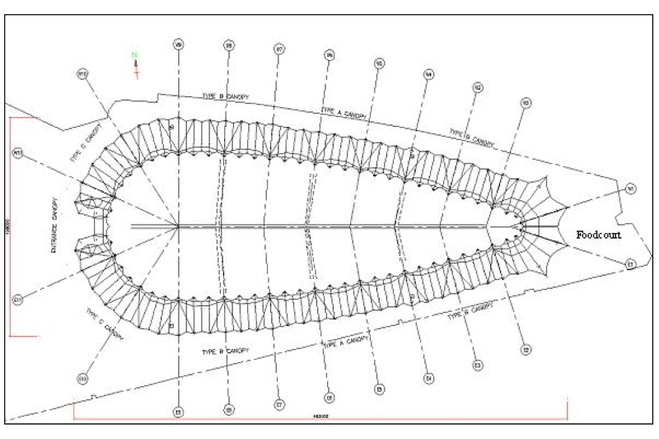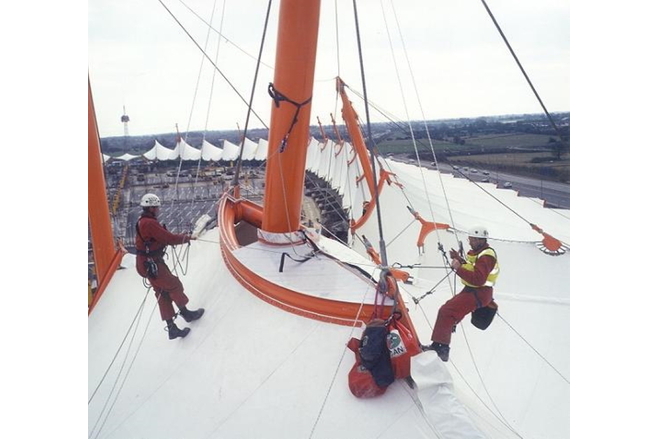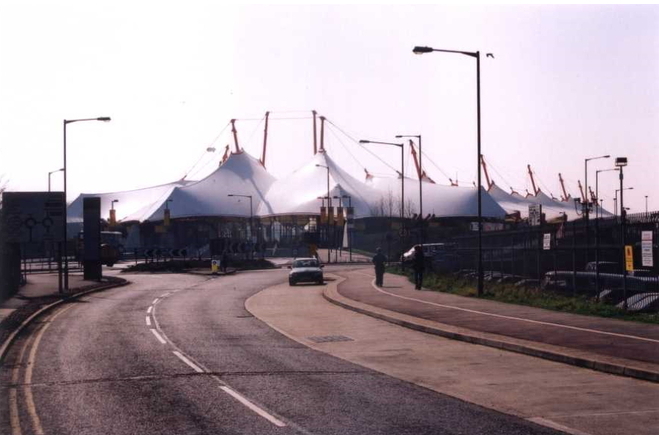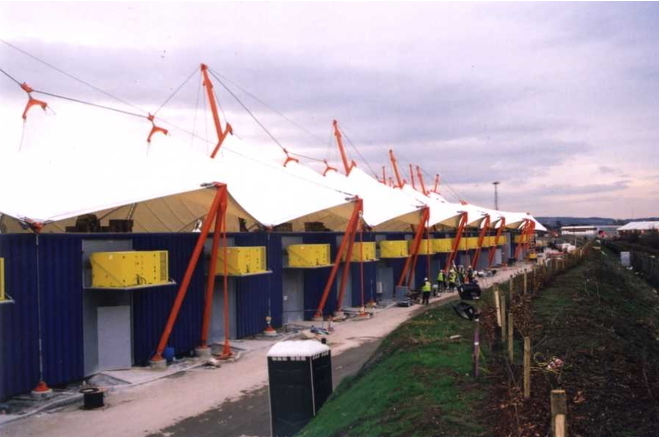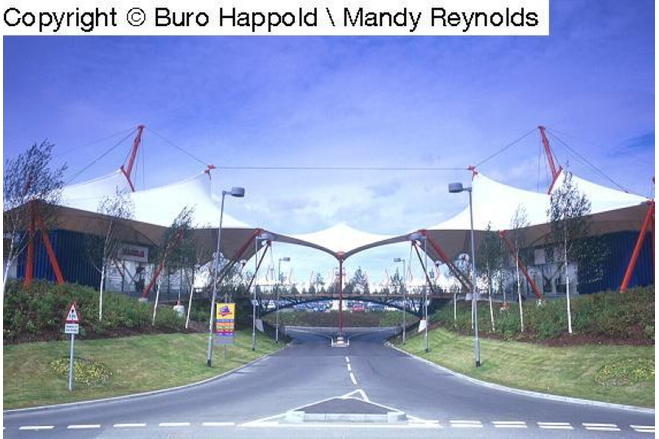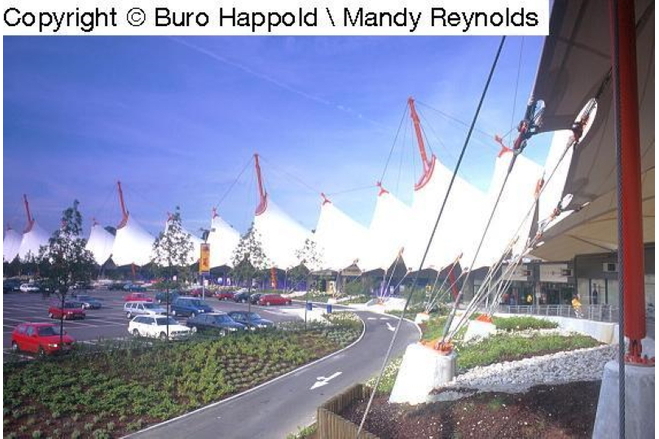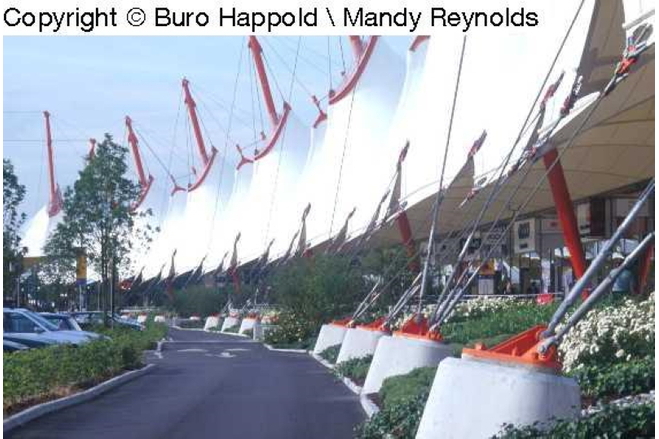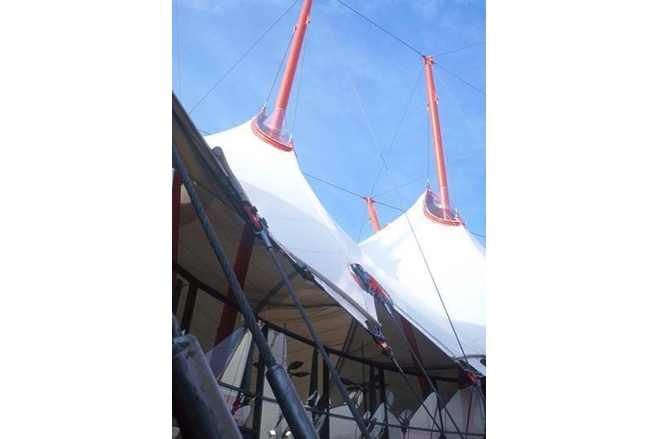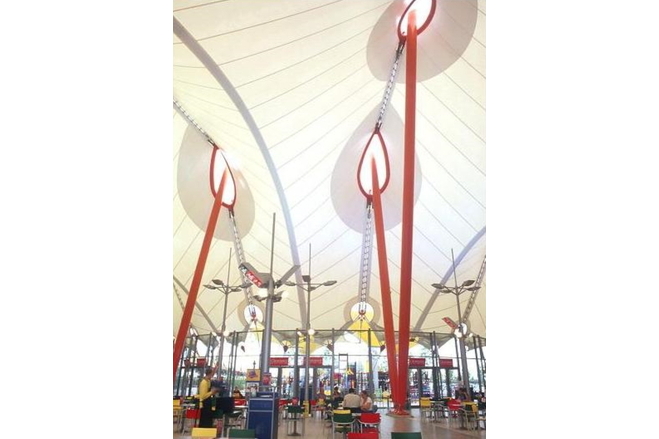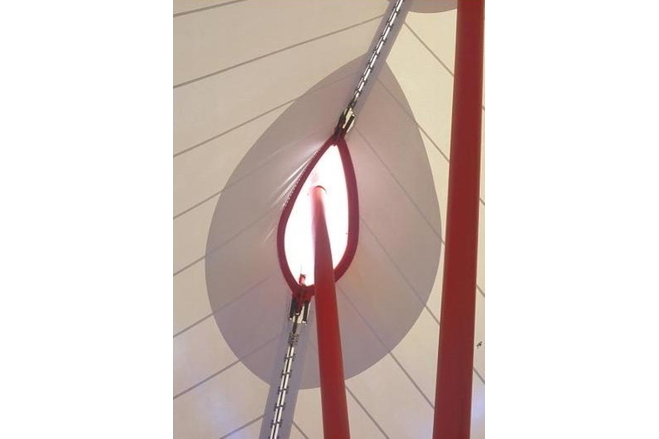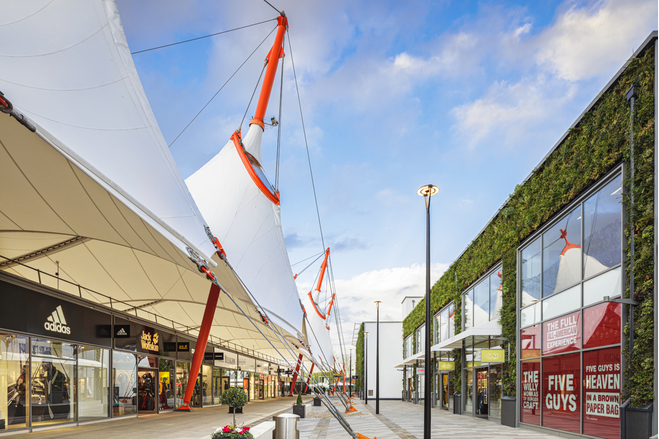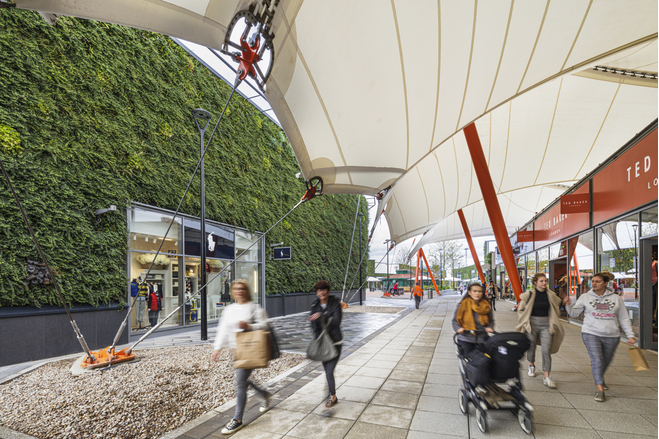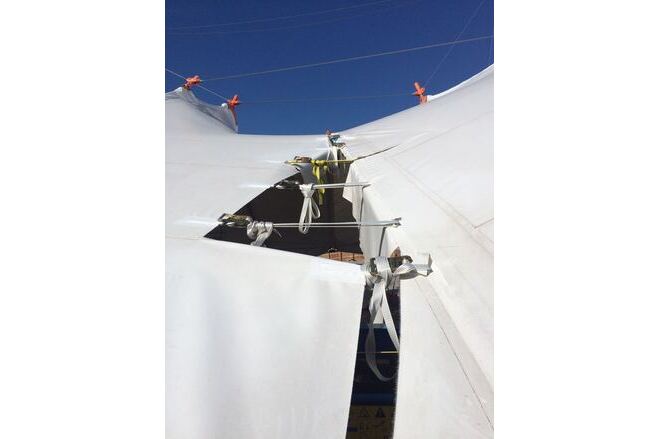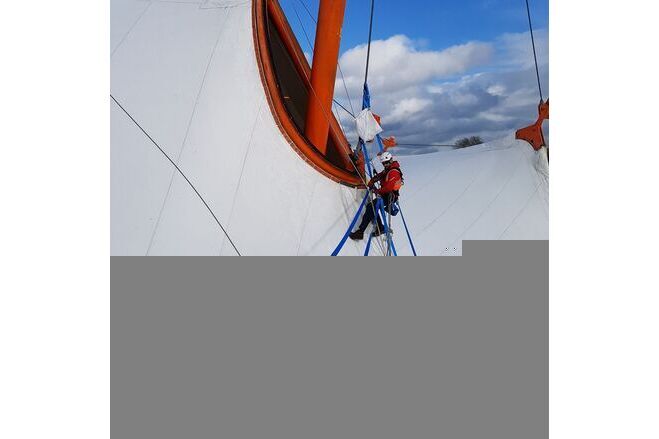McArthur Glen - Designer Outlet Village, Ashford
General information
-
Home page
http://www.architen.com/projects/mcarthurglen-designer-outlet-village/
-
Location address
Ashford, Kent
-
Location country
United Kingdom
-
Year of construction
1996
-
Name of the client/building owner
BAA McArthur Glen UK Ltd
-
Function of building
Shops and stores
-
Degree of enclosure
Open structure
-
Climatic zone
Temperate - cold winters and mild summers
-
Number of layers
mono-layer
-
Type of application of the membrane
covering
-
Primary function of the tensile structure
- Daylight gains
- Rain protection
- Sun protection
- Wind protection
Description
Located on the outskirt of Ashford in Kent, this 35,000 square metre continous tensile canopy, is the largest in the world and is at the cutting edge of building design. The continuous tensile canopy contains a number of smaller retail units and is designed around a central car park reached from the South entrance.
It sits on a reclaimed brownfield site, it responds positively to its surroundings by forming a continuation of the adjacent landscaping and it provides an icon for the Client with its vertical drama. The use of a tensile structure has allowed the solution to be realised for the minimum of cost and has allowed the system to be installed quickly.
Buro Happold engineers were involved in the tensile structure design as well as highway and transport engineering for the whole site. Pedestrians and train passengers enter at the north end of the site past a tourist information centre, large food court, management accommodation and public display area.
In 2017 owners McArthur Glen embarked on the construction of a brand-new extension. However, the new mall buildings clashed with the existing food court and it was clear that the area of canopy over the food court would need to be removed.
A challenging procedure
Using computer modelling software to analyse the existing canopy and the new form proposed by the project design team, various scenarios could be virtually played out to see how the membrane would behave. But once settled on an achievable design, the reality of removing a large portion of the canopy, whilst keeping the retained fabric membrane roof both intact and structurally stable through installation and beyond, was a challenge. As Architen Landrell had built the original canopy 18 years before, McArthur Glen and contractors McLaren Construction returned to Architen Landrell.
With design and installation teams working hand in hand, significant analysis was carried out during the design stage to establish the safest way to stabilise the structure, dismantle the old canopy and install the new one. Working to the highest safety standards, the highly experienced installation team used temporary rigging to hold the canopy in position whilst the food court area was dismantled. Continuous testing was carried out on site during the installation period to ensure that the temporary works were performing and that the remaining portion of the canopy was behaving as anticipated.
Once the food court canopy was removed, temporary rigging remained in place until the new canopy section was attached to the existing membrane and to the newly installed support structure. Only when the newly configured structure was determined to be performing was the temporary rigging removed.
Description of the environmental conditions
A lot of the structure is open and provides shelter for the retail units. The food court, which also has a fabric roof cover offers a semi-internal environment.
Material of the cover
-
Cable-net/Fabric/Hybrid/Foil
Fabric
-
Material Fabric/Foil
Polyester
-
Material coating
PVC
Main dimensions and form
-
Covered surface (m2)
35000
-
Total length (m)
500
-
Total width (m)
200
-
Form single element
Anticlastic
Duration of use
-
Temporary or permanent structure
Permanent
-
Design lifespan in years
31-..
Involved companies
-
Architects
Richard Rogers Partnership
-
Engineers
Buro Happold
ARCHITEN LANDRELL
-
Contractors
ARCHITEN LANDRELL
-
Suppliers
SERGE FERRARI



